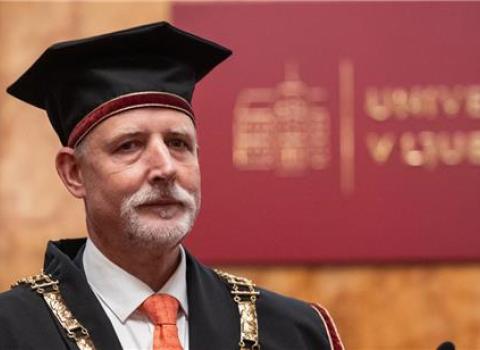Using inspiration from nature, a team of European researchers have harnessed new photonics technology to develop the first fluid-repellent, antibacterial, metal surface taking us a step closer to self-cleaning saucepans, toilets, and dishwashers.
Lotus leaf helps scientists develop first self-cleaning metals from Matter PR on Vimeo.
Taking their ideas from defence mechanisms found in plants such as the Lotus leaf, the ‘High Throughput Laser Texturing of Self-Cleaning and Antibacterial Surfaces’, or ‘TresClean’ project, has made a breakthrough that will enable the production of self-cleaning sheet metal on an industrial scale for the first time.
TresClean has used high-power laser cutting devices to create microscopic ‘spikes’ and ‘ridges’ in sheet metal, causing liquids to ‘bounce off’ the rough micro-topography that mimics the surface of the Lotus leaf.
This roughened surface creates miniature pockets of air that minimises the contact area between the surface and a liquid, almost like standing on a bed of needles.
This new technique will initially be used to create antibacterial surfaces for use in the food production industry – dramatically increasing productivity and reducing costs in factories which process biological food products such as milk, tomato sauce, and yoghurt.
Professor Luca Romoli, Project Coordinator of TresClean explains:
“In the same way that Lotus leaves keep themselves clean, without the need for cleaning products or chemicals, their jagged, rough surfaces enable water to stay as spherical droplets by preventing ‘spreading’.”
“Bacteria do not get a chance to stick because the contact with the metal surface and the liquid is reduced by over 80%. We are looking at an anti-bacterial metal”.
Laser Textured Surfaces
While this replicating approach may currently exist for specific and expensive plastic components, it is a first for self-cleaning metal.
Metal surfaces are textured using innovative industrial photonics devices: high-average power ultrashort-pulsed lasers are used in combination with high-performance scanning heads by utilising an innovative beam delivery method enabling movements of up to 200 m/s.
TresClean can achieve this surface texturation quickly by cutting areas of 500 square cm in less than 30 minutes. In early 2015 production methods could make laser-etched metal at a rate of 1 square inch in 1 hour, whereas TresClean can produce 1000 square cm in the same period of time, making this technology 156 times quicker than before.
Initially aiming its product at machine parts for the food industry TresClean hopes to make a significant impact on productivity: “Vats in milk factories need to be cleaned every 6-8 hours to avoid the exponential growth of bacteria. This hinders usage and therefore affects output” Romoli said.
“By saving hours per day in cleaning, it will yield an efficiency improvement stemming from fewer sterilization cycles and less cleaning time within production as a whole. This will also reduce energy consumption as a result of fewer cleaning phases making food production quicker, safer and more profitable”.
Professor Romoli sees the long-term possibilities and implications for other sectors: “It is possible that any use of metal that needs to avoid the formation of bacteria will benefit from the TresClean product, such as medical cutting tools, sterile surfaces, dishwashers, or even saucepans”.
Coordinated by the UNIVERSITÁ DEGLI STUDI DI PARMA, the consortium includes members from Italy, France, Germany, Spain and the UK and has received a grant of €3,363,091.25 from the Photonics Public Private Partnership under the H2020 Industrial Leadership funding calls.
About TresClean
The TresClean project will develop high-throughput laser-based texturing for fluid-repellent and antibacterial metal surfaces using innovative industrial high-average power ultrashort-pulsed lasers in combination with high-performance scanning heads.
These technologies will be applied to produce self-cleaning and aseptic machine parts for food industry (e.g. components in contact with biological fluids) and home appliances (e.g. dishwashers) by utilising a beam delivery method over areas that can reach 250 mm2. In the first phase of the project the basic research activities for the surface design will be implemented together with subsequent robust and scalable processing technologies and the development of the required laser sources and scanning systems.
With the purpose of meeting the end users’ requirements all the activities included in the first phase will be defined in detail in accordance to the predefined physical limits of the system technology. The design of surface structures and definition of the characterization methods will inform the subsequent work on two different technologies (DLIP and LIPSS) for the production of the needed structures, with respect to the process robustness and the scalability.
In the second phase the technologies developed will be up scaled to a high throughput production of functional surfaces. The laser systems and high speed scanning unit will be combined. Work on the upscaling of the processes on simplified geometries (2D) and development of processing strategies for the defined demonstrative parts will be performed.
Then the final demonstration, the testing of the added functionality and the high throughput production will be done on the defined parts from the end-users in the last phase of the project.
About Photonics21
Photonics21 is the European Technology Platform (ETP) for photonics –a technology encompassing all of the products and processes around the emission, manipulation and detection of light. It is integral to a wide range of industries that include the medical, healthcare, transport, manufacturing, and telecommunications sectors. In December 2005 "Photonics21" was set up to bring the community of photonics professionals and industries together.
In September 2009, the European Commission defined photonics as one of five European Key Enabling Technologies (KET's) and shortly after the European Research & Innovation Program "Horizon 2020" invited Photonics21 to become a "Public Private Partnership" (PPP). In November 2013 the "Photonics 21 Association", a legal entity under Belgium law, became the private contract partner in a Public Private Partnership (PPP) in conjunction with the EU Commission.
Today Photonics21 represents more than 2600 personal members from all over Europe. Our members are experts in the photonics industry, research organisations and universities who actively engage with us to develop a joint photonics strategy for future research and innovation in Europe.
With the global photonics market growing at twice the world economic growth rate, from 350 Billion Euros in 2011 to 615 Euros in 2020, Photonics21 stands in a secure global market position. The production of European photonics alone accounts for 60 billion Euros and employs over 350,000 people directly.
With strong growth forecast, current industry trends like digitalisation, resource efficiency, individual and zero failure production will drive the photonics industry further.
For more information about Photonics21 visit http://www.photonics21.org/index.php





 A unique international forum for public research organisations and companies to connect their external engagement with strategic interests around their R&D system.
A unique international forum for public research organisations and companies to connect their external engagement with strategic interests around their R&D system.